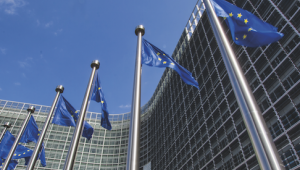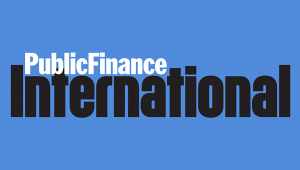In 2014, the development of the European Union’s sanctions policies was marked by the escalation of the conflict in eastern Ukraine, leading to the adoption by the EU of a wide range of restrictive measures, including most importantly those targeting sectoral cooperation and exchanges with the Russian Federation.
In the midst of this geopolitical crisis, two trends have emerged. Firstly the European Union, despite its differences and sometimes divergent interests with respect to trade with Russia, has managed to speak with one voice and has unanimously condemned the violation of Ukraine’s territorial sovereignty. In doing this, it has confirmed that it is now ready increasingly to deploy sanctions as a preferred diplomatic tool against targeted countries. Secondly, the EU has demonstrated its willingness to extend the reach of its own sanctions regimes, no longer exclusively focusing on financial transactions with specific individuals or entities (also known as ‘asset-freeze measures’).
As a result, all companies operating internationally are more and more exposed to the application of far-reaching sanctions regimes, such as those currently in force with respect to Russia. As regulatory scrutiny is mounting and additional sanctions measures are being considered in Washington DC and Brussels, the main challenge faced by companies operating in the EU is to ensure that they at compliant at all times with the sanction obligations that apply to their trading with Russia.
The EU’s competence to impose sanctions derives from several sources. First, the EU must implement restrictive measures adopted by the UN Security Council in accordance with Chapter VII of the UN Charter. As members to the UN, the EU and its 28 Member States are under a legal obligation to implement all sanctions imposed by the UN. But in an environment in which the UN Security Council has been facing increasing difficulty in agreeing on universal sanctions regimes owing to striking political differences among its members, the EU has had recourse much more frequently than before to the EU Treaty in order to impose sanctions autonomously within the framework of the Common Foreign and Security Policy (CFSP). The comprehensive sanctions rules adopted with respect the Eastern Ukraine and Russia since 2014 have been adopted under this framework.
Indeed, in close coordination with the US, the EU has implemented a comprehensive sanctions regime against Russia that include the following prohibitions and restrictions on
dealing in new equity or new debt related to sanctioned Russian banks, Russian energy companies, and Russian defence companies; on providing drilling and pipeline equipment to Russia; goods or services to certain enterprises conducting Arctic, deepwater, or shale oil exploration and production; and providing dual use goods or technology if such items are or may be intended for military use or for a military end-user in Russia.
on transacting any business with any individual or any entity on the US list of Specially Designated Nationals or the EU Consolidated List of Sanctions.
For the first time, EU sanctions measures include not only traditional sanctions measures – including an embargo on trade in arms, an export ban for dual use goods for military end use and end users, and restrictions on access to certain sensitive technologies, particularly in the oil sector – but also a package aimed at limiting access to EU capital markets for Russian State-owned financial institutions. These measures have been designed by the EU to put pressure on the Russian government as “Restricting Russian access to financial markets will make more difficult and more costly the long term financing of the Russian economy”.
As the political repercussions are undeniable, similarly the impact of such restrictions on the EU market has been unprecedented. And many European companies have been left with the challenge of navigating a sophisticated set of rules, initially without real guidance from the EU or the national regulators. As a testament of this lack of clarity, an English court recently referred to the European Court of Justice questions concerning the validity and interpretation of the key provisions of the EU laws which imposed a range of sanctions on various Russian industries in response to Russia’s actions destabilising the situation in Ukraine. This has been accentuated by the fact that the regulators have expressed that commercial decisions are ultimately for companies to make themselves on the basis of commercial risk, bearing in mind increased risk that high-profile business engagement might be exploited by Russia for political reasons.
As the Council of the EU has already affirmed that it may expand or reduce the number of natural or legal persons listed through the adoption of other Council decisions or regulation and may expand or reduce measures in the areas of trade and finance, there is a continuing duty to be vigilant. With tension in Eastern Ukraine reaching new heights, the EU is preparing further work and stands ready to deploy ‘any appropriate action, aiming at ensuring a swift and comprehensive implementation of the Minsk agreements’. In other words, the EU is considering new sectoral restrictions if the situation on the ground deteriorates further.
Watch this space as the EU has embarked upon a new sanctions journey that will be every bit as unpredictable as it was before.
Aline Doussin is a senior associate at Squire Patton Boggs







